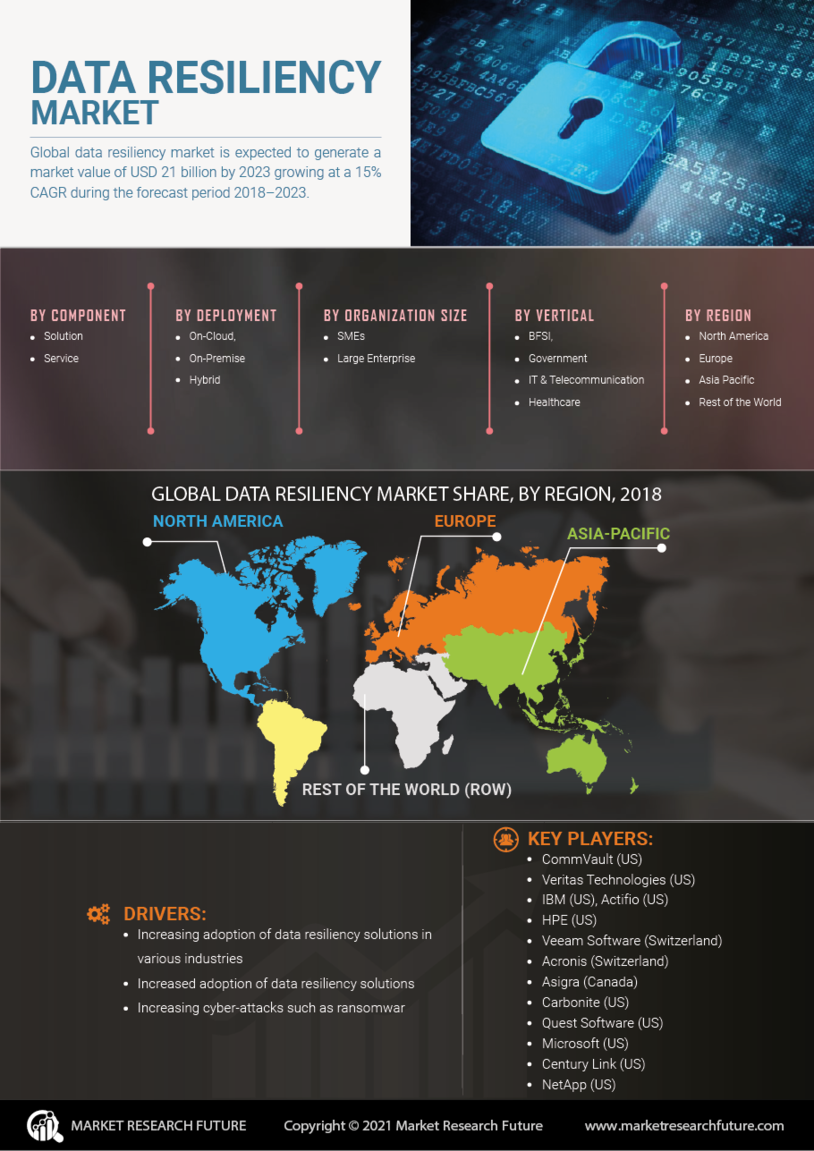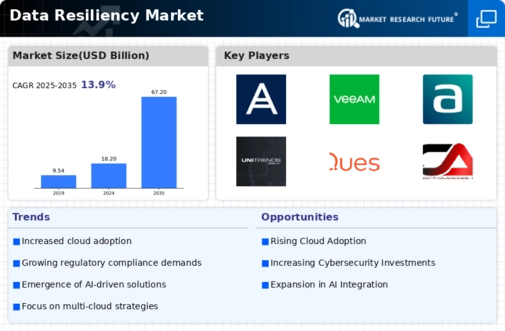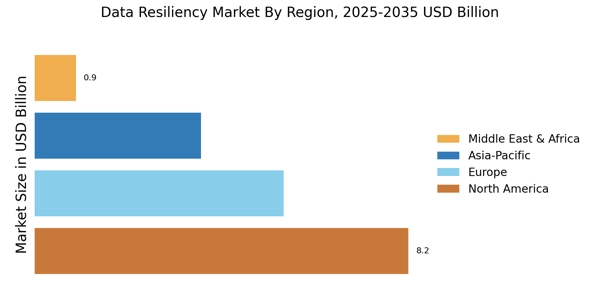The Data Resiliency Market is currently characterized by a dynamic competitive landscape, driven by the increasing demand for robust data protection solutions amid rising cyber threats and data breaches. Major players such as IBM (US), Microsoft (US), and Veeam Software (US) are strategically positioning themselves through innovation and partnerships to enhance their service offerings. IBM (US) focuses on integrating artificial intelligence into its data resiliency solutions, thereby improving predictive analytics and response times. Meanwhile, Microsoft (US) emphasizes cloud-based solutions, leveraging its Azure platform to provide scalable and flexible data protection services. Veeam Software (US) is also enhancing its portfolio by focusing on hybrid cloud environments, which allows for greater data accessibility and recovery options, thus shaping a competitive environment that prioritizes technological advancement and customer-centric solutions.
In terms of business tactics, companies are increasingly localizing their operations and optimizing supply chains to enhance service delivery and reduce latency. The Data Resiliency Market appears moderately fragmented, with a mix of established players and emerging startups. This fragmentation allows for diverse offerings, yet the collective influence of key players like Oracle (US) and Commvault (US) is significant, as they continue to set industry standards through their comprehensive solutions and strategic partnerships.
In August 2025, Oracle (US) announced a strategic partnership with a leading cloud service provider to enhance its data resiliency offerings. This collaboration aims to integrate advanced machine learning capabilities into Oracle's existing solutions, thereby improving data recovery times and reducing operational costs for clients. Such a move underscores Oracle's commitment to innovation and its proactive approach to addressing the evolving needs of businesses in a data-driven landscape.
In September 2025, Commvault (US) launched a new suite of data protection solutions specifically designed for small to medium-sized enterprises (SMEs). This initiative reflects Commvault's strategy to penetrate underserved market segments, providing tailored solutions that meet the unique challenges faced by SMEs. By focusing on this demographic, Commvault not only expands its customer base but also reinforces its position as a versatile player in the data resiliency space.
In October 2025, Veeam Software (US) unveiled a new feature within its backup solutions that utilizes AI to predict potential data loss scenarios. This innovative approach not only enhances the reliability of data recovery but also positions Veeam as a leader in proactive data management. The integration of AI into their offerings indicates a broader trend within the industry, where companies are increasingly leveraging technology to provide smarter, more efficient solutions.
As of October 2025, the Data Resiliency Market is witnessing a shift towards digitalization, sustainability, and AI integration. Strategic alliances are becoming pivotal in shaping the competitive landscape, as companies collaborate to enhance their technological capabilities and service offerings. Looking ahead, competitive differentiation is likely to evolve from traditional price-based competition to a focus on innovation, technology integration, and supply chain reliability, as organizations seek to establish themselves as leaders in a rapidly changing environment.


















Leave a Comment